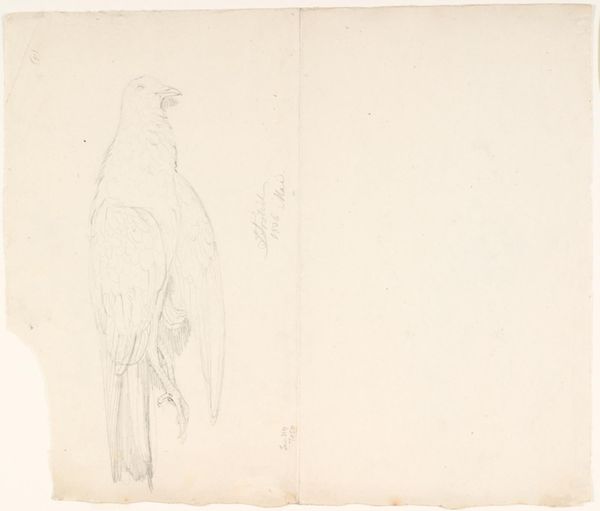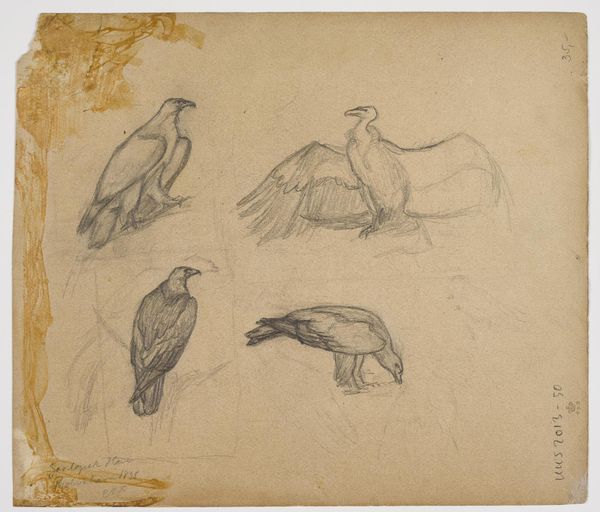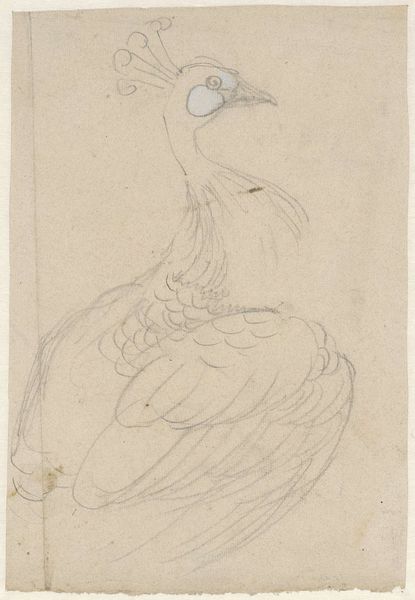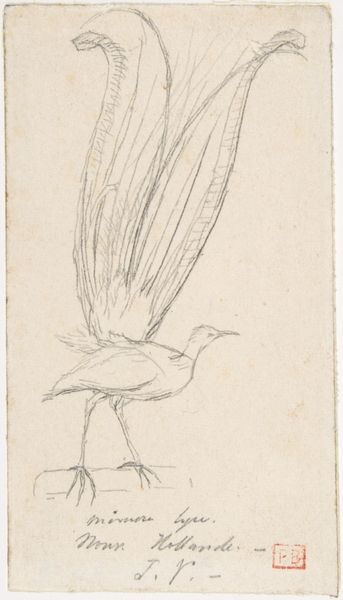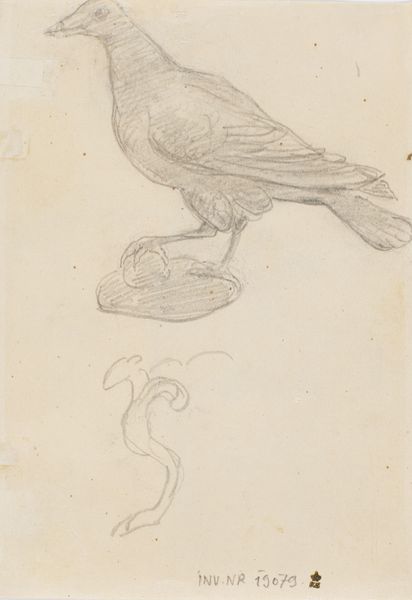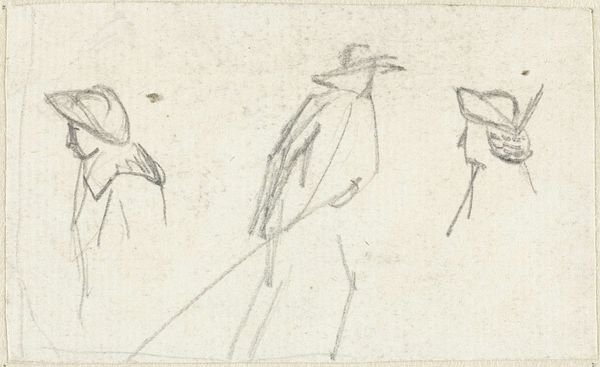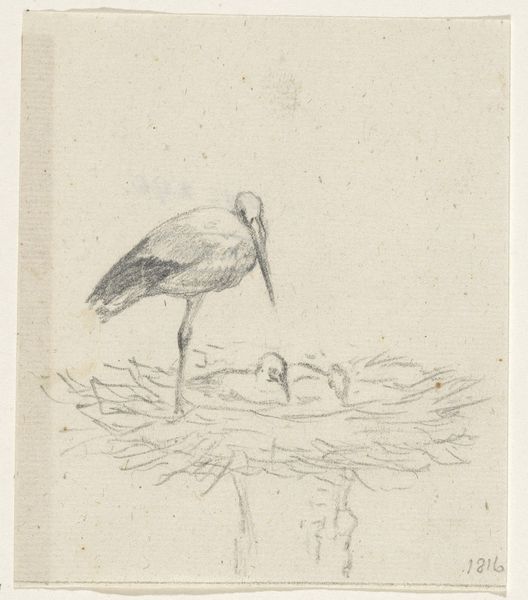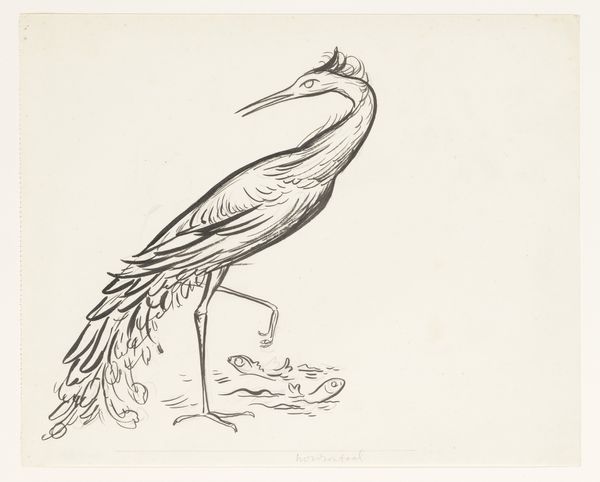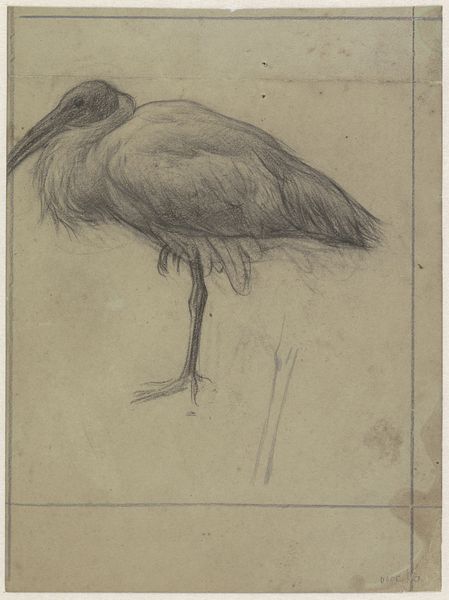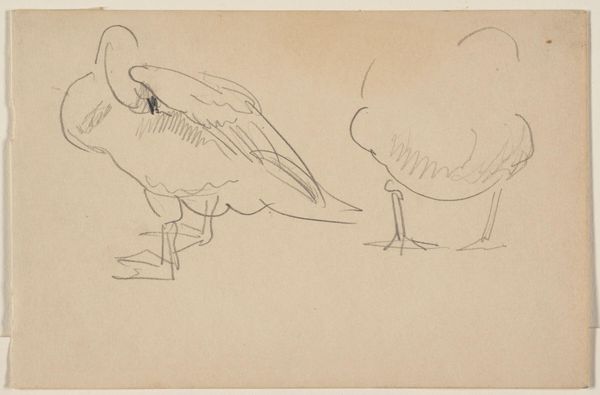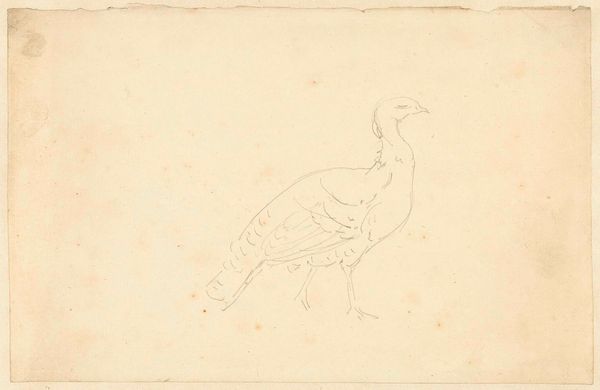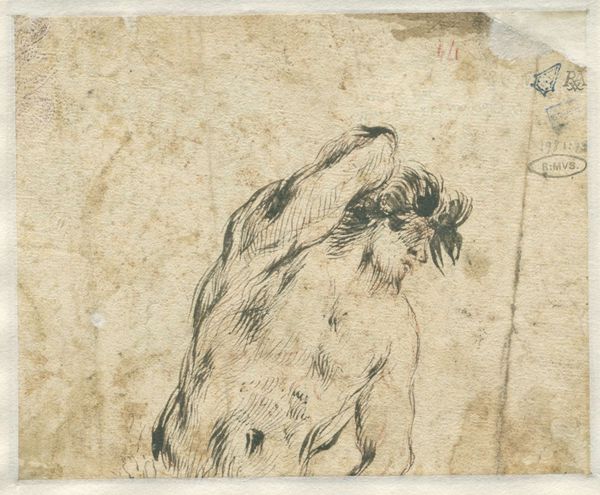
Copyright: Public Domain
Editor: This is "A Turkey and a Turkey Head" by Henri de Toulouse-Lautrec, created around 1899. It's a delicate pencil sketch on paper, and something about its simplicity feels very direct, almost vulnerable. What stands out to you in this piece? Curator: Well, beyond the immediate, almost comical depiction of the turkey, I see layers of symbolic weight. Consider the era: Lautrec, a master of capturing fleeting moments of Parisian life, now turns his attention to this bird. Editor: You mean that he's known for depicting theatre, cabarets and socialites... Curator: Exactly! The turkey itself is interesting, historically. What does it represent, culturally, especially in the West? Editor: Thanksgiving? Abundance? Is there some irony here then? This simple sketch of the animal being observed versus its cultural loading, perhaps commenting on it's value.. Curator: Precisely! Think of the Impressionist movement itself, breaking from academic tradition. Could Lautrec be subtly subverting expectations here? By isolating the animal he asks us to reconsider both subject and symbol. The isolated head reinforces a theme of mortality perhaps? Editor: That makes me think about other sketches of animals throughout art history; It brings a psychological intensity, focusing on the creature's being. Curator: Indeed. This drawing, seemingly simple, opens a pathway into cultural memory. It invites reflection on the meaning we assign to the natural world and our relationship to it. What do you think now? Editor: Now I see it is about this artist who gives value to modern life drawing upon older art's knowledge, the animal in itself has meaning through culture and history and a universal element; life observed with the awareness of it passing by... A small sketch carrying so much history and knowledge!
Comments
No comments
Be the first to comment and join the conversation on the ultimate creative platform.
